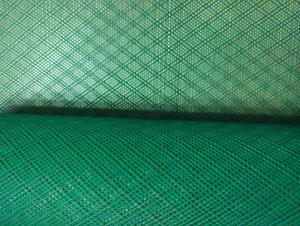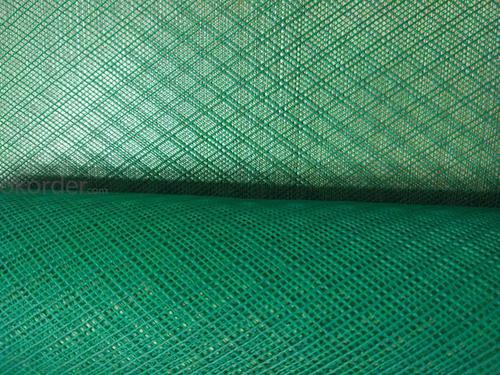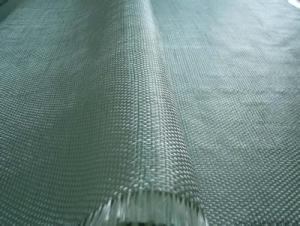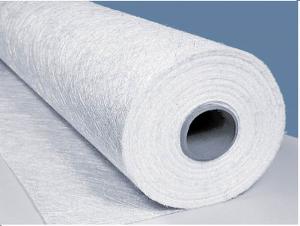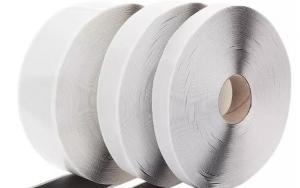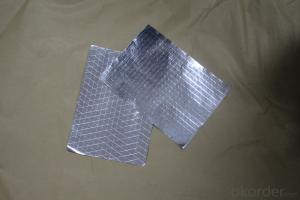Flow Media-vacuum infusion process fiberglass
- Loading Port:
- Shanghai
- Payment Terms:
- TT or LC
- Min Order Qty:
- 500 m²
- Supply Capability:
- 1000000 m²/month
OKorder Service Pledge
OKorder Financial Service
You Might Also Like
Flow Media
Product Description
Flow Media is a kind of resin drainage medium with low cost, which is widely used in vacuum infusion molding process. It can make resin permeate into any part of the products evenly and quickly. According to the different molding technology of products, it can be divided into two types: weaving type and extruding type. It has been proved that, extruding type can make workers easy to tile them without any curl. While regarding the weaving type, it is good for the flowing of air and resin because of its three-dimensional weaving structure. The demoulding effect is good and the cost is lower. Flow media mesh can be cut into any shapes. It is suitable for different shapes of products, with low consumption and good economic performance. It is widely applied to aerospace, wind-power blades, shipbuilding, racing, automotive, sports equipments and such composite manufacture industries.
Technique Data
Material: | PE |
Area Weight: | 110 g/m2 or 230g/m2 |
Width: | 120 cm |
Pattern: | Three-dimensional grid-like |
Temperature resistance: | 120℃ |
Color: | green |
Roll length: | 100 m |
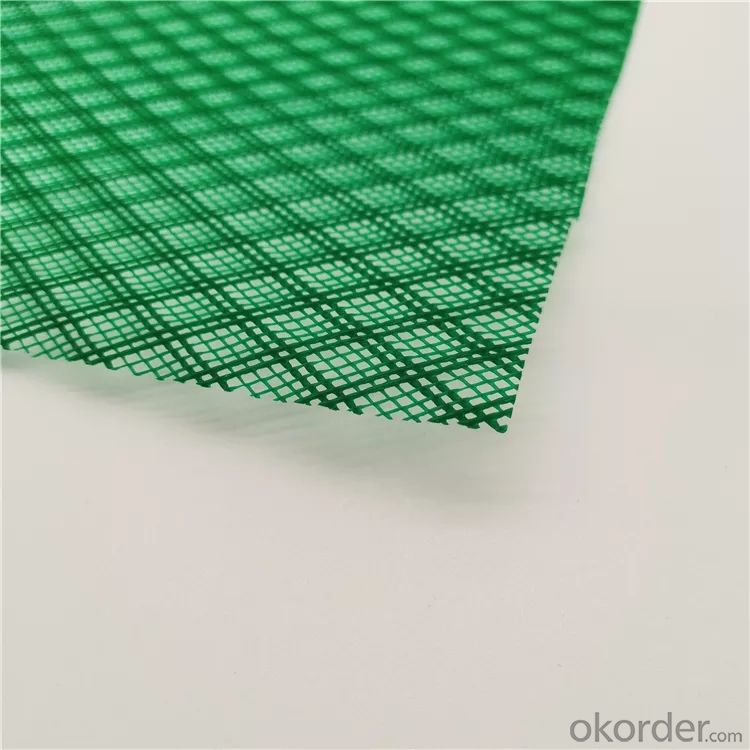
- Q: What are the disadvantages of using fiberglass fabric?
- One disadvantage of using fiberglass fabric is that it can be brittle and prone to cracking or breaking under certain conditions. Additionally, fiberglass fabric can be quite irritating to the skin and respiratory system, requiring the use of protective gear when working with it. Furthermore, fiberglass fabric is not as flexible as other materials, making it more challenging to work with in certain applications. Finally, fiberglass fabric can be more expensive compared to alternative fabric options, making it less cost-effective for certain projects.
- Q: Can fiberglass fabric be used for architectural applications?
- Certainly, architectural applications can make use of fiberglass fabric. This adaptable material presents several advantages for architectural projects. Its lightweight nature, flexibility, and exceptional tensile strength make it ideal for a range of applications, including roofing, cladding, and insulation. Moreover, fiberglass fabric's durability and longevity are enhanced by its resistance to fire, chemicals, and UV rays. Its ability to be effortlessly molded into intricate shapes further allows architects to conceive distinctive designs and structures. In conclusion, the manifold benefits and versatility of fiberglass fabric establish it as a favored option for architectural applications.
- Q: Are fiberglass fabrics suitable for use in the telecommunications industry?
- Yes, fiberglass fabrics are suitable for use in the telecommunications industry. Fiberglass fabrics offer several advantages that make them ideal for this industry. Firstly, fiberglass fabrics are known for their high strength and durability, making them capable of withstanding harsh environmental conditions, such as extreme temperatures, moisture, and UV exposure. This durability ensures that the telecommunications equipment, such as antennas and cables, are protected and can function optimally for an extended period. Additionally, fiberglass fabrics have excellent electrical insulation properties. This is crucial in the telecommunications industry as it helps prevent interference and signal loss, ensuring the transmission of clear and reliable signals. Fiberglass fabrics also have low dielectric constant and loss tangent, which further contribute to minimizing signal attenuation. Moreover, fiberglass fabrics are lightweight and flexible, making them easy to handle and install. This is particularly beneficial in the telecommunications industry as it allows for efficient and cost-effective installation of equipment and infrastructure. Furthermore, fiberglass fabrics have excellent resistance to chemicals, corrosion, and fire, making them highly reliable and safe for use in telecommunications equipment. This resistance ensures the longevity and reliability of the equipment, reducing maintenance and replacement costs. Overall, the high strength, durability, electrical insulation properties, lightweight nature, and resistance to chemicals and fire make fiberglass fabrics highly suitable for use in the telecommunications industry. They provide the necessary protection, reliability, and performance required for efficient and effective telecommunications operations.
- Q: Can fiberglass fabric be used for making filters?
- Yes, fiberglass fabric can be used for making filters. It is commonly used in applications where high temperature resistance, chemical resistance, and durability are required. The fine fibers of fiberglass fabric make it an effective material for filtering out particles and contaminants from air, liquids, or gases.
- Q: What is the "three proof cloth"? How to correctly use the three proof cloth?
- Three cloth is coated on the surface of PVC, PTFE refractory fiber, flame retardant silicone and other refractory materials, make fire waterproof mildew proof function, refractory fiber with fire, PVC, PTFE, silica gel has a waterproof function.
- Q: How is fiberglass fabric used in the production of protective gloves?
- Fiberglass fabric is used in the production of protective gloves as it provides excellent heat resistance and insulation properties. It is often used as a lining material in gloves to protect the wearer from extreme temperatures and potential burns. The fiberglass fabric acts as a barrier, preventing heat transfer and ensuring the safety of the user. Additionally, fiberglass fabric is lightweight and flexible, allowing for comfortable and dexterous glove designs.
- Q: How does fiberglass fabric handle repeated flexing and stretching?
- Fiberglass fabric handles repeated flexing and stretching quite well. Its inherent strength and flexibility allow it to withstand continuous bending and stretching without losing its shape or integrity. The unique properties of fiberglass, including its high tensile strength and resistance to fatigue, make it an excellent choice for applications that require durability and long-lasting performance even under repetitive flexing and stretching.
- Q: What is the typical lead time for ordering fiberglass fabrics?
- The typical lead time for ordering fiberglass fabrics can vary depending on the supplier and the specific product. However, it is common to expect lead times ranging from a few days to a couple of weeks. It is advisable to contact the supplier directly to get an accurate estimate for the particular fiberglass fabric being ordered.
- Q: How does fiberglass fabric perform in moisture resistance?
- Fiberglass fabric performs exceptionally well in moisture resistance. Due to its composition and structure, it is highly resistant to water absorption, making it an ideal choice for applications that require protection against moisture and humidity.
- Q: What are the different widths available for fiberglass fabric rolls?
- Fiberglass fabric rolls typically come in various widths to accommodate different applications and preferences. The available widths can vary depending on the manufacturer, but some common options include 1 inch, 2 inches, 3 inches, 4 inches, 6 inches, 12 inches, and 24 inches. These widths are designed to provide flexibility and versatility for a range of projects, from small repairs and patching to larger-scale applications such as boat construction or automotive repairs. It is important to check with the specific supplier or manufacturer to determine the exact widths available for fiberglass fabric rolls, as they may offer additional or customized options to cater to specific needs.
Send your message to us
Flow Media-vacuum infusion process fiberglass
- Loading Port:
- Shanghai
- Payment Terms:
- TT or LC
- Min Order Qty:
- 500 m²
- Supply Capability:
- 1000000 m²/month
OKorder Service Pledge
OKorder Financial Service
Similar products
Hot products
Hot Searches
Related keywords
